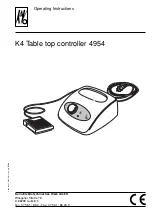
2
3
1.2
single gouge auger set for more or less soft soils
The single gouge auger set for more or less soft soils (left-hand figure) consists of two regular single gouge augers
(1, 2), a bent spatula (3) and a carrying bag (4). the set is suitable for use in softer soils such as peat, clay and
sandy or disturbed soils.
Both augers measure 110 cm; their operational depths are 50 (1) and 100 cm (2) respectively. the upper part has
rubber grips.
1.3
single gouge auger set for hard soils
The single gouge auger set for hard soils (right-hand figure) consists of a gouge auger with a heavy-duty auger
body (1), an impact-absorbing steel hammer (2), a bent spatula (3) and a carrying bag (4). the set is suitable for
use in harder soils such as dry soils or soils containing debris.
the auger’s body has an operational depth of 100 cm and has a beating head welded onto it. the upper part has
rubber grips.
The steel hammer is impact-absorbing; its head contains lead bullets flowing in the direction of the stroke upon
impact. its nylon cups prevent damage to the gouge auger.
1.4
single gouge auger set for very hard soils
the single gouge auger set for very hard soils consists of a gouge auger, Purckhauer type, a gouge auger pulling
set with hammer, a bent spatula and a carrying bag. the set is suitable for use in very hard soils such as stiff loam
and soils containing debris.
The Purckhauer gouge auger’s operational depth is 100 cm and it has an 18-mm inside diameter (see left figure on
page 4). the outside diameter varies from 25.5 mm at the bottom end to 30 mm at the top end. its conical shape
causes the gouge auger not to have too much frictional resistance of the soil. the top end has an opening for in-
sertion of either the grip or the lever. the grip (2) has two telescoping parts. the tip of one of the halves is slanted
and can be used to remove the soil sample.
Single gouge auger set
for more or less soft soils
(left)
Single gouge auger set for
hard soils (right)
































